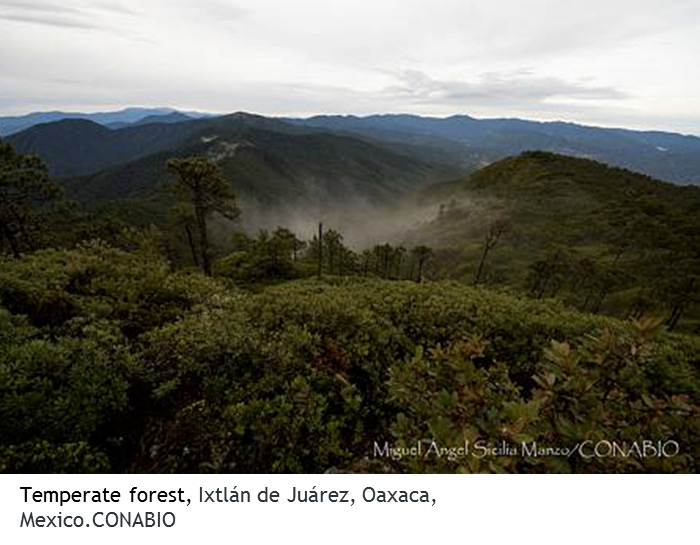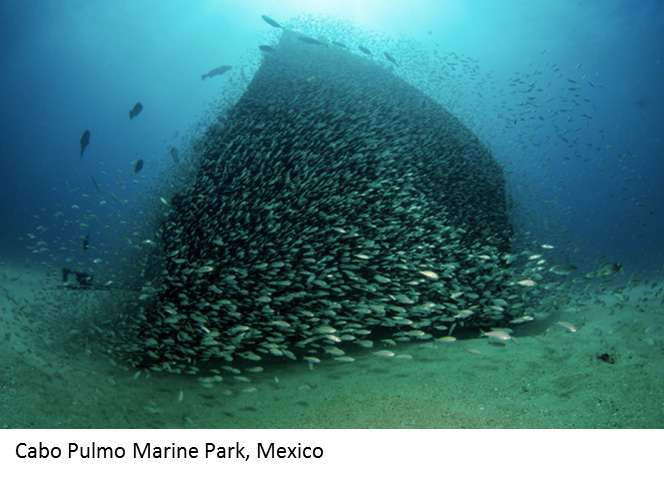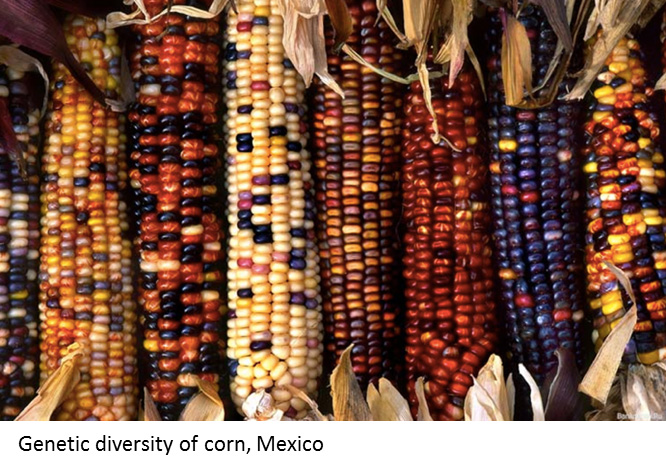The Biodiversity Finance Initiative: a perspective of the challenges and opportunities for biodiversity funding in Mexico
- Mariana Bellot
- National Coordinator for Mexico, The Biodiversity Finance Initiative
Consultant for the United Nations Development Program
The Strategic Plan 2011-2020 and the Aichi Targets of the Convention on Biological Diversity pose a number of challenges and global commitments that all countries must meet in the coming years. Moreover, in September 2015, all countries adopted under the United Nations the 2030 Sustainable Development Agenda, which include 17 Sustainable Development Goals focusing on a wide variety of challenges, including the protection and sustainable use of ecosystems and biodiversity through Target 14 “Life Below Water” and Target 15 “Life on Land”. Achieving these goals and its targets requires a significant amount of national and international resources as well as coherence in conservation and biodiversity policies and programs. Globally, it is estimated that an annual additional investment between US$130 and US$440 billion annually would be needed for the implementation of the CBD Strategic Plan (CBD High-Level Panel (2014). Resourcing the Aichi Biodiversity Targets: An Assessment of Benefits, Investments and Resource needs for Implementing the Strategic Plan for Biodiversity 2011-2020. Second Report of the High-Level Panel on Global Assessment of Resources for Implementing the Strategic Plan for Biodiversity 2011-2020. Montreal, Canada).
 The Fifth National Report of Mexico to the CBD in 2014 presents significant advances in the Aichi Targets, particularly for targets related to protected areas (Target 11), knowledge of biodiversity (Target 19), biodiversity strategies (Target 17) and the use of natural resources (Target 4), among others. However, the report also takes stock of those goals that still have significant shortcomings and require new commitments and actions at a national level. These efforts also require biodiversity mainstreaming into productive sectors and national development agenda. Undoubtedly, the new SDGs will provide the opportunity to achieve such goal.
The Fifth National Report of Mexico to the CBD in 2014 presents significant advances in the Aichi Targets, particularly for targets related to protected areas (Target 11), knowledge of biodiversity (Target 19), biodiversity strategies (Target 17) and the use of natural resources (Target 4), among others. However, the report also takes stock of those goals that still have significant shortcomings and require new commitments and actions at a national level. These efforts also require biodiversity mainstreaming into productive sectors and national development agenda. Undoubtedly, the new SDGs will provide the opportunity to achieve such goal.
The Challenge
Among the goals that require further progress in Mexico is Target 20, which states that Parties to the CBD should mobilize all sources of funding in order to significantly increase resources for the management and conservation of biodiversity, according to current levels of investment and expenditure. Mexico´s Fifth National Report to the CBD concludes that there has been a positive trend in the national public expenditure on biodiversity as well funding from international cooperation. However, biodiversity expenditure has not been accounted in a systemic manner.
The implementation of the new National Biodiversity Strategy and Action Plan (NBSAP) to be released in mid-2016 will require increased investments in biodiversity as well as a review of the flows of financial resources.
Taking into account that public and private resources are limited, it is critical to:
a. Estimate costs and prioritize NBSAP implementation
b. Identify opportunities and options to mainstream additional resources into the conservation and sustainable use of biodiversity
c. Reduce financial flows that are harmful for biodiversity and optimize those which benefit.
One of the key challenges is to estimate the finance gap required to finance biodiversity at a national level. Based on BIOFIN results, Mexico will estimate the financing needs to achieve the goals of Aichi and in particular the implementation of its NBSAP. This will be essential to develop a comprehensive strategy for resource mobilization to identify opportunities to enhance investments that favor biodiversity management.
 Mexico has been a leader in estimating the finance gap for Protected Areas following on the CBD’s Program of Work on Protected Areas-PoWPA. The National Commission for Natural Protected Areas (CONANP) has done extensive work on estimating the finance gap for the conservation and management of the Protected Area National System. At the moment there are 177 national protected areas covering around 25.7 million hectares (81% terrestrial and 18.9% marine). CONANP has estimated that the finance gap is around USD$34 million annually, which is 50% more of its current budget. Furthermore, Mexico committed to achieve Aichi Target 11 of the CBD related to new protected areas by 2018. This will require an additional amount of USD$60.5 million annually, primarily from fiscal budget in order to cover a total of 69.01 million hectares of both terrestrial and marine area (CONANP, 2016).
Mexico has been a leader in estimating the finance gap for Protected Areas following on the CBD’s Program of Work on Protected Areas-PoWPA. The National Commission for Natural Protected Areas (CONANP) has done extensive work on estimating the finance gap for the conservation and management of the Protected Area National System. At the moment there are 177 national protected areas covering around 25.7 million hectares (81% terrestrial and 18.9% marine). CONANP has estimated that the finance gap is around USD$34 million annually, which is 50% more of its current budget. Furthermore, Mexico committed to achieve Aichi Target 11 of the CBD related to new protected areas by 2018. This will require an additional amount of USD$60.5 million annually, primarily from fiscal budget in order to cover a total of 69.01 million hectares of both terrestrial and marine area (CONANP, 2016).
Regarding current investments, it is estimated that the total Expenditure for Environmental Protection represents 1% of GDP, and only 8% of this is directly spent for biodiversity and landscape conservation (INEGI, 2015). Additionally, the allocation of expenditure impacting biodiversity by the most relevant government sectors such as agriculture, forestry, fisheries, tourism, energy and rural development is unknown.
As for various resources from external funding, including bilateral and multilateral international cooperation, there has been an increase in the past years. Globally, financing for biodiversity from Official Development Assistance (ODA) has increased during the last decade reaching USD$5.6 billion per year and representing 4.3% of total ODA. From 2011 to 2013, biodiversity related ODA for Mexico has also increased, reaching USD$51.7 million according to information reported by the OECD Development Assistance Committee.
Global Environment Facility (GEF) alone has provided Mexico with more than USD$158 million from 1992 to date for biodiversity projects, mobilizing an additional government, private sector and civil society co-funding of more than USD$550 million. Many of these projects have resulted in successful cases of biodiversity conservation and management as well as sustainable development with the participation of local communities.
Opportunities: The BIOFIN approach
In order to support the country’s efforts in mobilizing resources for biodiversity, Mexico joined in 2015 the Biodiversity Finance Initiative-BIOFIN, managed by the United Nations Development Program. The initiative is supported by the Ministry of Environment and Natural Resources (SEMARNAT), the Ministry of Finance and Public Credit (SCHP), the National Forestry Commission (CONAFOR), the National Commission for Natural Protected Areas (CONANP), the National Commission for the Knowledge and Use of Biodiversity (CONABIO) and the National Institute of Statistics, Geography and Information (INEGI). The BIOFIN Initiative aims to identify opportunities for increasing, optimizing and realigning resources for the conservation and sustainable use of biodiversity and ecosystem management.
The BIOFIN methodology analyzes the current policy and institutional framework affecting biodiversity and ecosystem services, both positively and negatively, and quantifies past and current public and private expenditures to estimate a baseline. The purpose is to help track biodiversity investments and budgets that have not been identified in the past.
On related sectors, the only prior experience on expenditure tracking in Mexico has been on climate change finance, which resulted in the integration of an annex in the annual Federal Expenditure Budget Report published by the Ministry of Finance for both the government and public viewing.
Based on a policy and institutional review, BIOFIN Mexico has identified the main public policies related to biodiversity. Such information will be matched with the program budgeting in order to estimate the total public expenditure by the government. Based on this information, BIOFIN together with relevant agencies will determine the investment needed to meet NBSAP targets and other priority strategies and actions. Results will provide information to determine the finance gap on biodiversity.
 In coordination with government private entities, BIOFIN will identify opportunities to mobilize resources, optimize current expenditures and develop a finance strategy to increase investments towards conservation, sustainable use and restoration.
In coordination with government private entities, BIOFIN will identify opportunities to mobilize resources, optimize current expenditures and develop a finance strategy to increase investments towards conservation, sustainable use and restoration.
Evidence so far has revealed that the value of biodiversity is unrecognized by productive sectors, both from a public and private perspective. In order to promote investments towards conservation, it is imperative to develop and properly communicate evidence-based data for policy makers about the development opportunities that biological diversity offers. Therefore, BIOFIN is supporting biodiversity mainstreaming by processing information on public policies and financial resources and collaborating with other initiatives focused on valuation of biological diversity and its ecosystem services. Investing on biodiversity is investing in the future.
“Conservation without resources is only conversation!”
(personal quote from former Commissioner for Protected Areas of Mexico)
Disclaimer: The views and opinions expressed in this article are those of the author and do not necessarily reflect the official policy or position of any agency
Profile of Mariana Bellot
Mariana Bellot is currently National Coordinator for the Biodiversity Finance Initiative-Mexico, as a consultant to the United Nations Development Program. She has a BA in International Studies and a Master´s Degree on Environmental Policy and Development by the University of Sussex, UK. Ms. Bellot has over 15 years-experience working on a wide range of biodiversity related issues, particularly biodiversity conservation and protected areas, ecosystem services, financing and ecosystem-based adaptation.
Ms. Bellot has worked for several government agencies in Mexico, and was formerly the General Director for Institutional Development and Outreach in the National Commission for Protected Areas. She has been part of the Mexican Delegation to the Convention on Biological Diversity since 2001, and is also member of the IUCN’s World Commission on Protected Areas and was part of the Second High-Level Panel on Resource Mobilization for Biodiversity under the CBD.










